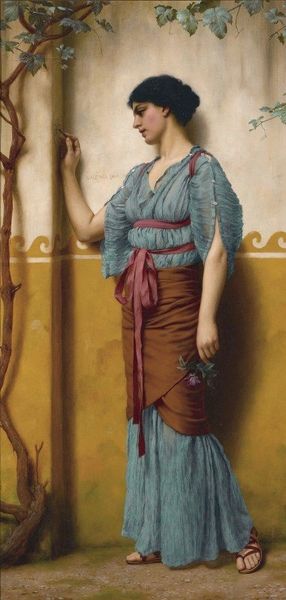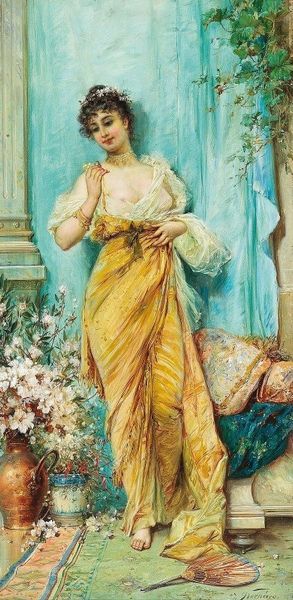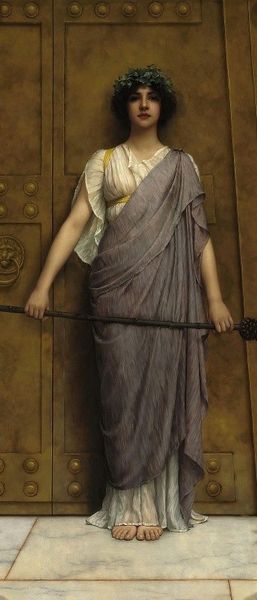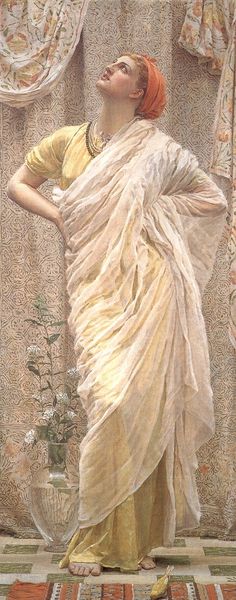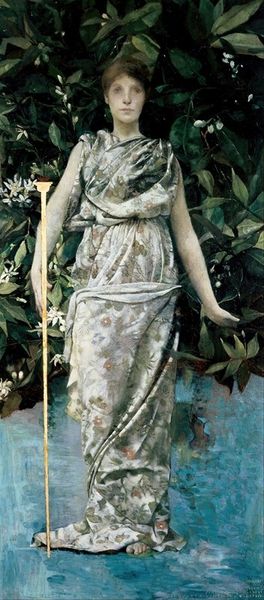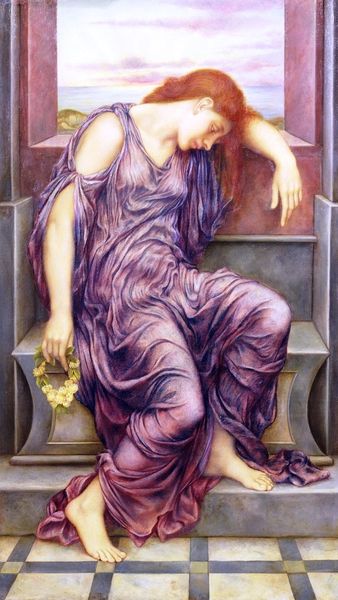
Copyright: Public Domain: Artvee
Curator: Here we have John William Godward's "Beauty In A Marble Room," painted in 1894 using oil on canvas. What are your initial thoughts? Editor: It’s a scene of serene timelessness. The palette is wonderfully subdued; all soft blues and creams that create an enveloping calmness. She is perhaps an updated version of Venus. Curator: Indeed. Godward’s preoccupation with classical aesthetics is evident. Consider the structural clarity: the vertical emphasis, balanced by the horizontal lines of the marble architecture. The composition draws on neoclassicism in its attempt to express order. Editor: The marble itself strikes me, though. The use of marble signals luxury but also recalls the weight of history, doesn’t it? Godward is linking the woman to that historical continuity; beauty isn't simply fleeting, but tied to the ages. It becomes another layer to the symbolism of beauty, doesn't it? Curator: Symbolism, yes, but also the cool, smooth surface serves a formal purpose, highlighting the texture of the sheer drapery. Notice the play of light across the folds. These lines define the form of the figure. Editor: I can't ignore that slight touch of melancholia in her downcast gaze. Is it weariness or some internal pensiveness? Marble and beauty can feel a bit cold if not approached with warmth. She seems poised in a transitional space, though I think that speaks to beauty never remaining stagnant and often requiring renewal and evolution, not so unlike us all. Curator: Well, the psychological state certainly adds a layer to the pure formalism of the composition. Yet for me the geometry holds—the carefully calculated ratios and proportions are essential to reading the painting as an aesthetic experience. Editor: All things considered, the cultural context helps. A woman positioned within classical iconography transcends being merely an object and enters an allegorical and culturally rich domain. I hadn’t thought of the scene like that before, your argument reframes my first reading of the painting. Curator: And you’ve shown me how the image is more than merely a study of light and form. Beauty is never just an aesthetic principle but always functions inside a cultural landscape.
Comments
No comments
Be the first to comment and join the conversation on the ultimate creative platform.

